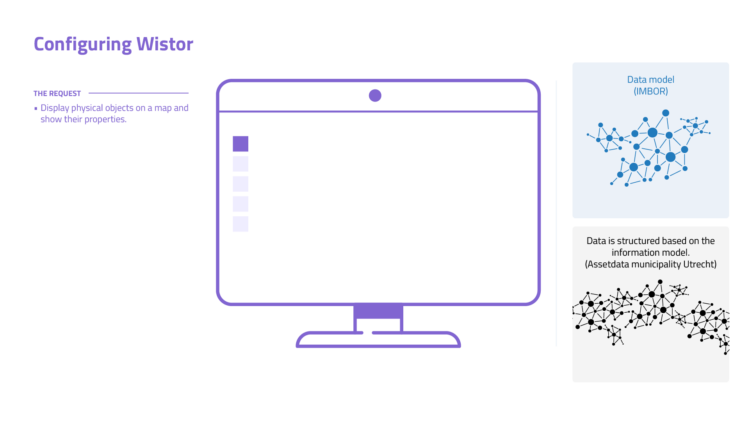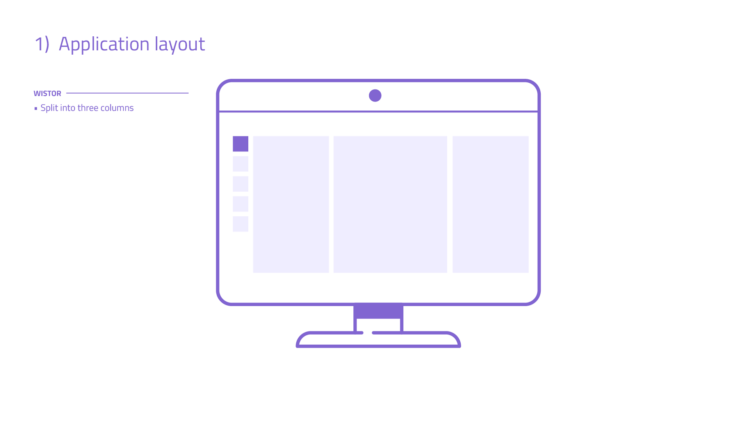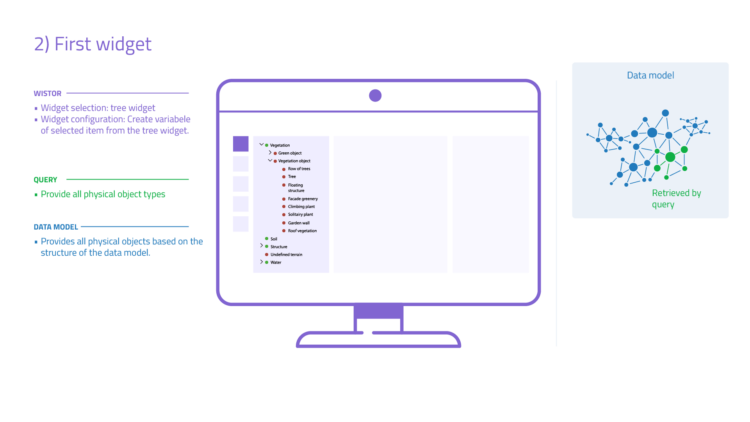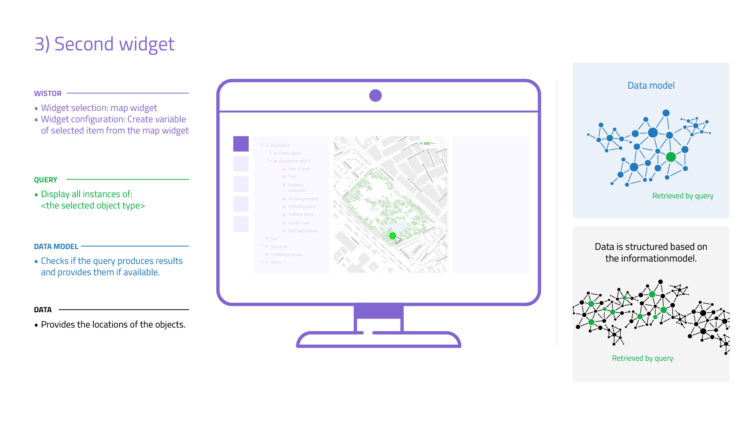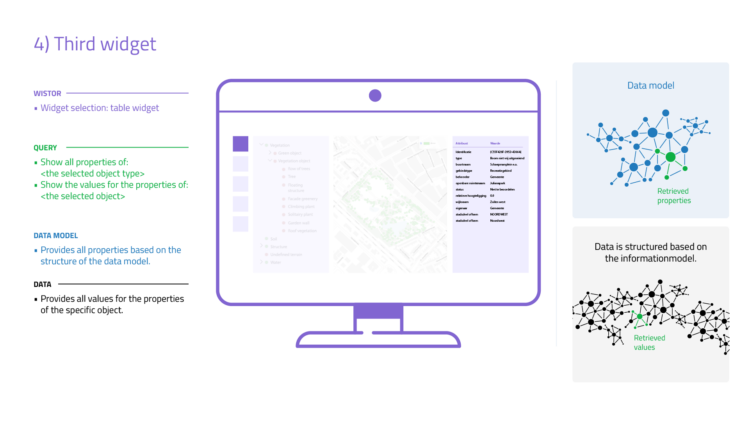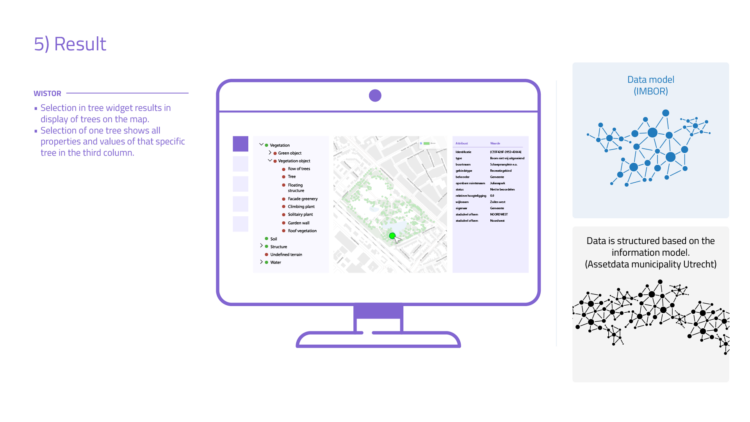How Can You Work Data-Centric with Wistor?
Posted on 30 January 2025 by BIM-Connected
Does your organization want to work data-centric, separating applications from data? Then Wistor is the way to go. Wistor is a low-code platform based on open standards, enabling you to quickly, flexibly, and modularly configure applications. What sets Wistor apart is that the data structure and database are not part of the application. Instead, Wistor requires a separate data model built on open linked data standards. With Wistor, you can configure applications that work exclusively with your data structures and database, giving you complete ownership and control over your data and data model.
Application-Centric vs. Data-Centric Working
Many organizations today work application-centrically: they buy applications to support processes, with data embedded within those applications. Overlapping data across applications makes integration necessary—an expensive, complex, and error-prone task, especially as the number of applications grows. Over time, applications become less reliable, and it becomes unclear which data source is accurate. Since data is tied to applications, organizations often lose track of what data is stored where, why, and whether it’s up-to-date. The result? A lack of transparency and unreliable data—making informed decisions and strategic planning nearly impossible.
The solution is data-centric working. This means you own your data and maintain full control over it. With a data-centric approach, you separate data, data structures, integrations, and applications, allowing you to:
- Manage, develop, or replace each component independently without affecting your data or data model.
- Maintain access to your data at all times.
- Eliminate the need for data migrations altogether.
Benefits of Data-Centric Working:
- Transparency: Gain insight into what information you’re storing, why, and where.
- Ownership: Always have access to and control over your data, enabling reuse and maximization of its value.
- Reliability: Your data is a single source of truth, eliminating data silos across applications.
- Cost Savings: Reduce integration complexity and costs by centralizing your data layer.
- Vendor Independence: Avoid vendor lock-ins by separating data, data structures, and applications.
- Efficiency: Data migrations become unnecessary.
- Prioritization: Data comes first; applications follow.
Want to learn more about transitioning from application-centric to data-centric working? Read more in this article.
Data-Centric Working with Wistor
Wistor is the perfect platform for organizations looking to adopt data-centric working. Here’s why:
- Independent Data Storage: If you don’t already have a database or data structure, Wistor can help you create them. However, these remain separate from the application, allowing reuse for other purposes. Should you ever part ways with Wistor, you’ll retain ownership of your database and data structure.
- Data Accessibility: Your data isn’t stored in the Wistor application but remains with your organization in its original format. Wistor views and edits your data but never stores it elsewhere.
- Aligned Applications: With Wistor, applications are configured exclusively based on your data structure. This ensures your data structure remains the foundation.
- Modular Design: Wistor enables the creation of smaller applications for specific use cases, ideal for targeted user groups without unnecessary complexity.
- Speed: With configuration instead of coding, applications can be set up within weeks once your data structure and data are ready.
- Flexibility: Wistor’s front-end configurability makes it easy to adjust and personalize.
- Open Standards: Built on open linked data standards, Wistor prevents vendor lock-ins.
How Does It Work?
With Wistor, you build applications by creating pages divided into sections where widgets—small interactive elements—are placed. Widgets provide specific functionality and display data in various formats, such as tree structures, buttons, forms, checkboxes, text fields, charts, 2D/3D geometry viewers and tables. Currently, Wistor offers 35 widgets for building applications.
Here’s how it works:
- Select a widget for a specific section, such as a tree structure.
- Write a query based on your data model to retrieve the necessary data.
- Data from your central database is fetched and displayed using your chosen visualization.
What Can You Do with It?
Wistor was originally developed to create applications for the built environment, but its versatility allows for a variety of applications:
- Ontology Viewers: Applications that make data structures visual and understandable for all users. Example: Waternet OTL Viewer or IMBOR 2022 Viewer.
- Data Editing Applications: Tools for visualizing and editing data based on your own data structure. Example: Municipality of Utrecht’s object registration.
- Analysis Applications: Tools for integrated analyses based on multiple data sources. Example: BIM-Provecy at Rijkswaterstaat.
Check out all our cases to see what Wistor can do.
Wistor SaaS
All Wistor-configured applications are offered as SaaS (Software as a Service) solutions, adhering to the following principles:
- Cloud Hosting: Software runs on external servers managed by us, requiring no local installation. Users only need an internet connection and browser.
- Automatic Updates: We handle all platform updates and maintenance.
- Scalability: Applications can scale to meet user needs.
- Device Independence: Applications are accessible on any device with an internet connection.
Want to explore how Wistor can help your organization transition to data-centric working? Contact us today!
Jakko Heinen
jakko.heinen@bim-connected.com
06 533 393 82
